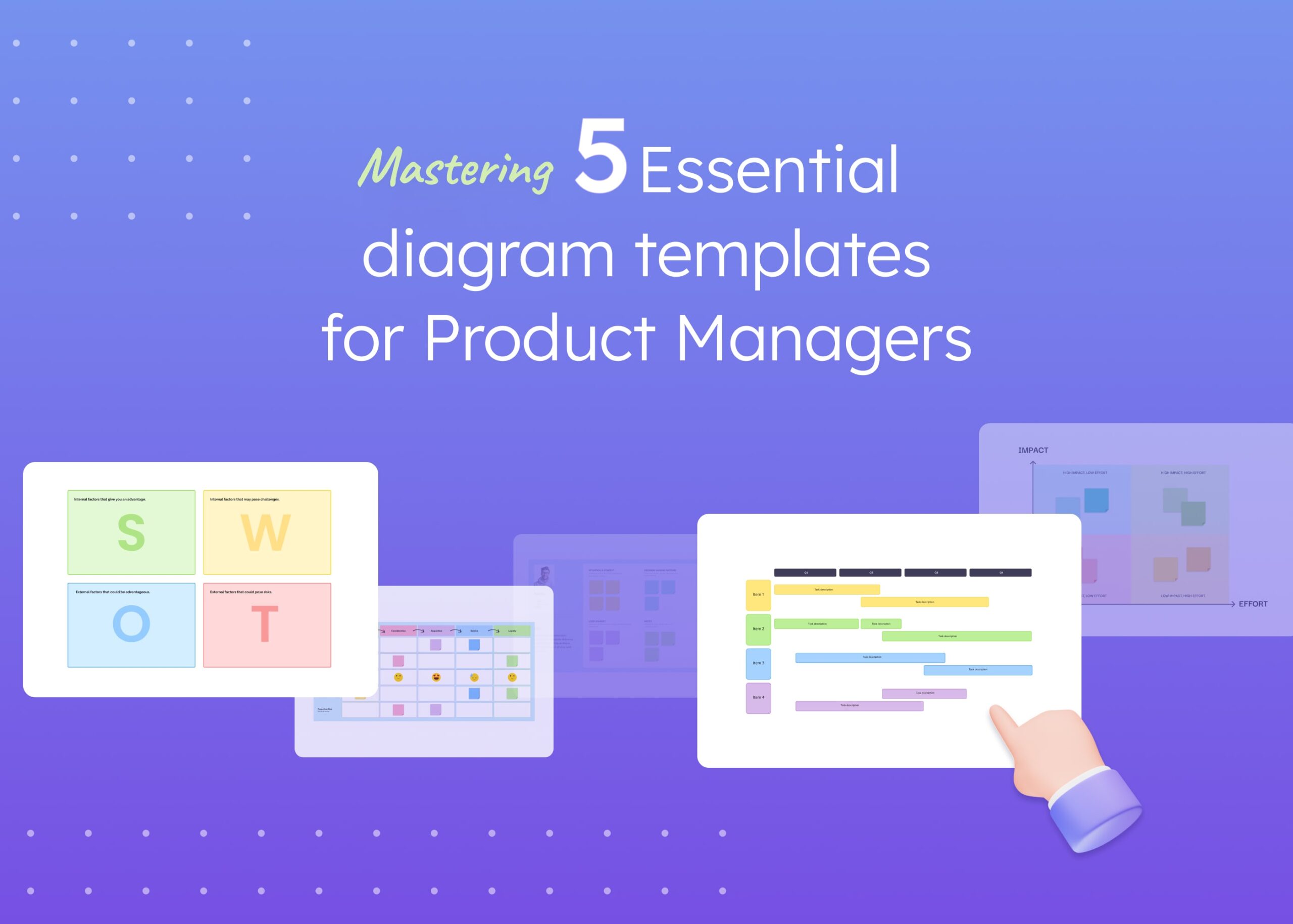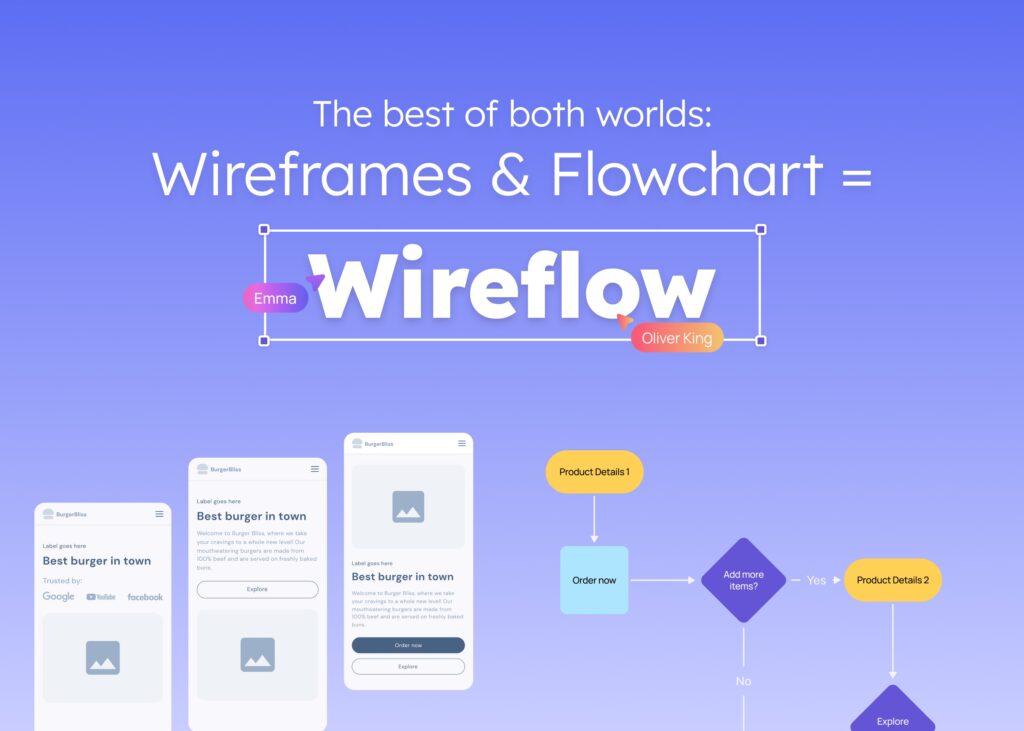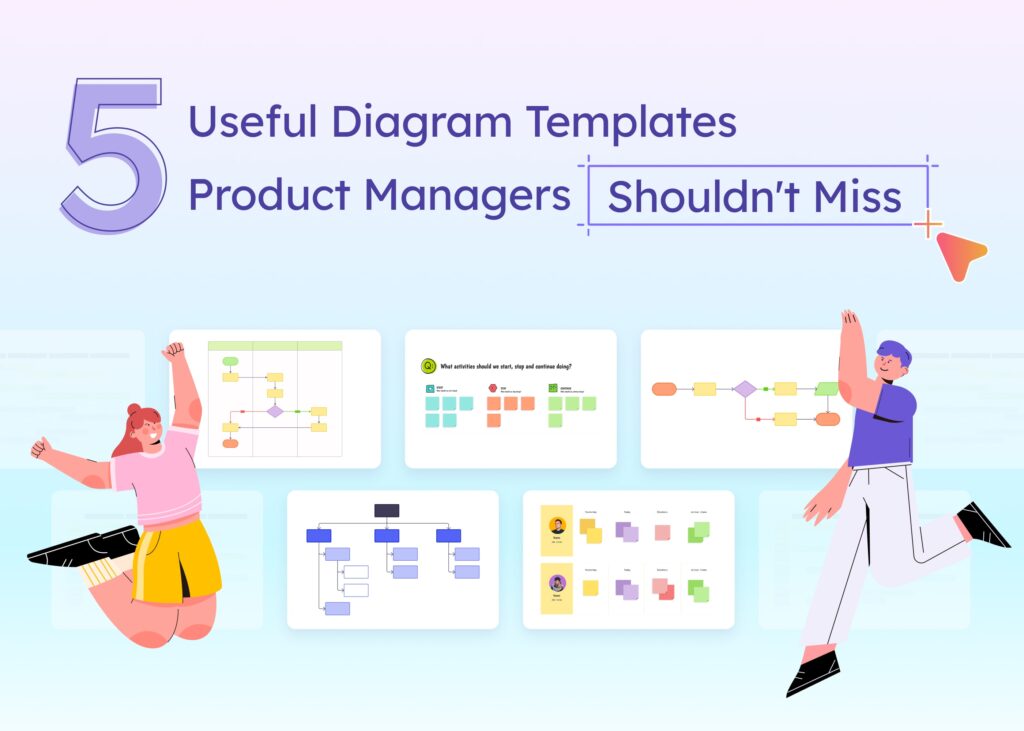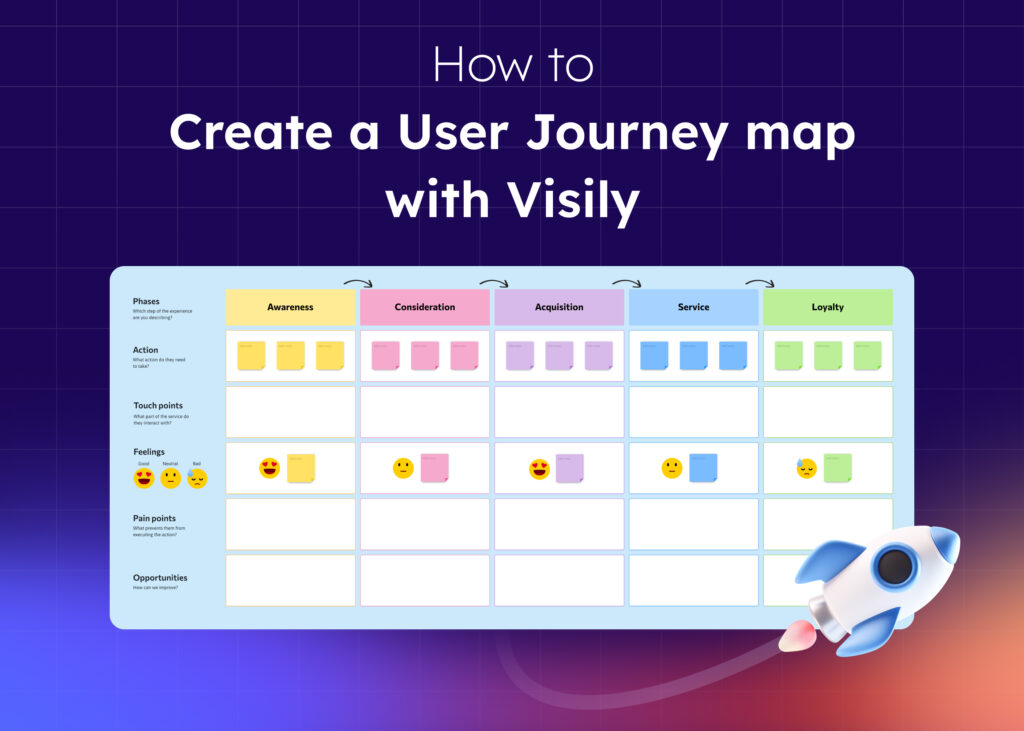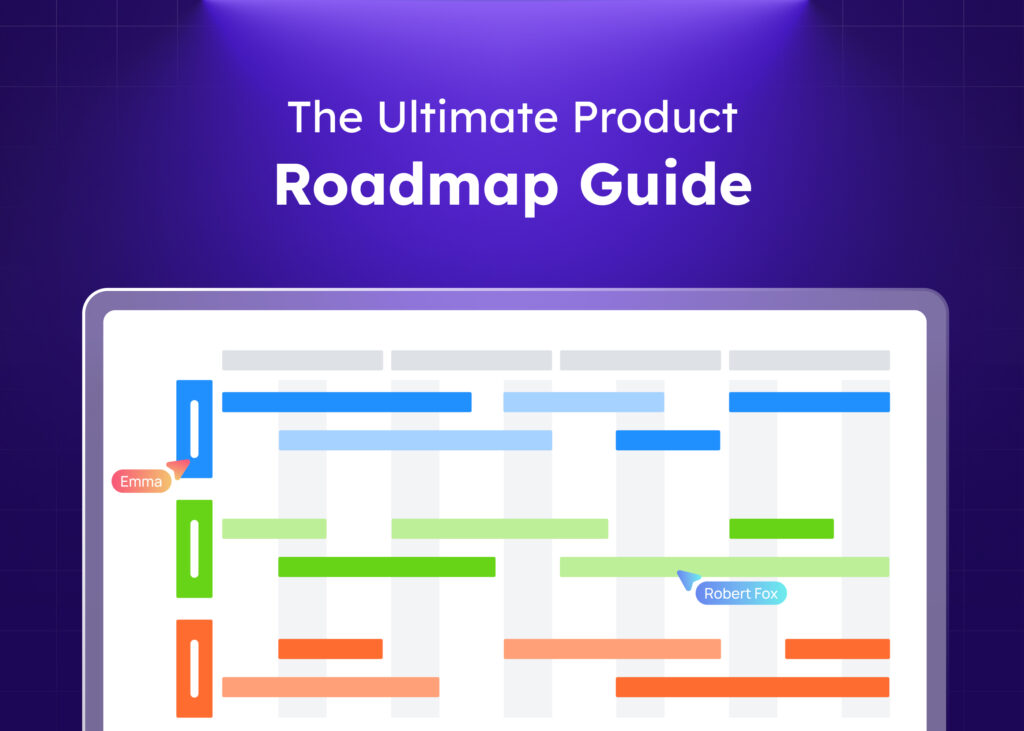The world of product management often feels overwhelming. Product managers frequently juggle complex features, user interactions, roadmaps, and the timely delivery of enhancements. In this chaos, the diagram template, such as Venn diagrams, and tree diagrams serves as an essential tool to restore clarity. This article explores five key diagram templates, such as product roadmap and user journey maps, that can guide you through product development and sharpen your product management skills.
Key Takeaways
- Diagraming is vital for translating complex concepts into clear visuals, which enhances team understanding and collaboration.
- Mastering these five key diagram templates—SWOT Analysis, Impact-Effort Matrix, Product Roadmaps, User Personas, and User Journey Maps—can lead to better decision-making, more efficient planning, and a stronger alignment with user needs and business goals.
- Utilizing a diagram template can help you fast-track your ideation stage. You can also use them in various aspects of product management for an optimal decision-making process, and clarification on complex data.
The Importance of Mastering Diagram Template

In the realm of product management, mastering diagram templates is not just beneficial—it is essential. Diagram templates are ready-to-use tools that help product managers clearly explain complex information, numerical data, or business processes so that their teams can make smart decisions. Diagram templates enhance understanding and collaboration on product strategies by transforming abstract ideas into clear, visual representations. This efficiency in communication is vital for effective teamwork and strategic planning.
Diagrams play a crucial role in various aspects of product management, from strategic planning and resource allocation to user experience design and stakeholder alignment. They serve as visual aids that simplify intricate processes and complex data, making it easier to identify trends, spot potential issues, and devise actionable solutions.
For product managers alike, understanding and utilizing diagram templates can significantly enhance their ability to convey complex ideas, plan projects, and make data-driven decisions. By leveraging the diagram template, product managers can ensure their teams are aligned and focused on shared goals, with a clear understanding of project objectives and direction. Explore further useful diagram templates in this blog.
In this post, we’ll delve into five essential diagram templates that are indispensable for product managers:
- SWOT Analysis
- Impact-Effort Matrix
- Product Roadmaps
- User Persona
- User Journey Maps
These diagram templates will help you navigate the complexities of product management, from strategic planning to user experience optimization.
5 Essential Diagram Templates for Product Managers
1. SWOT analysis

SWOT Analysis is a strategic planning diagram template used to identify and evaluate the Strengths, Weaknesses, Opportunities, and Threats related to a product or project. This analysis helps product managers assess their product’s internal capabilities and competitors’ landscape. Product managers can gain valuable insights by identifying internal strengths and weaknesses and external opportunities and threats. This allows them to leverage their strengths and address weaknesses while capitalizing on opportunities and mitigating threats.
Here’s how a SWOT analysis diagram template can be particularly useful for product managers:
- Identifying strengths: What unique features or functionalities does your product offer? Does it have a strong brand reputation or a loyal user base?
- Addressing weaknesses: Are there any limitations or areas for improvement in your product’s design, functionality, or user experience?
- Capitalizing on opportunities: Are there emerging market trends or user needs that your product can address?
- Mitigating threats: Is there strong competition in the market? Are there any technological or regulatory changes that could impact your product?
By using a SWOT analysis diagram template, product managers can gain a holistic view of their product’s position in the market and make informed decisions about its development and future direction.
2. Impact-Effort Matrix
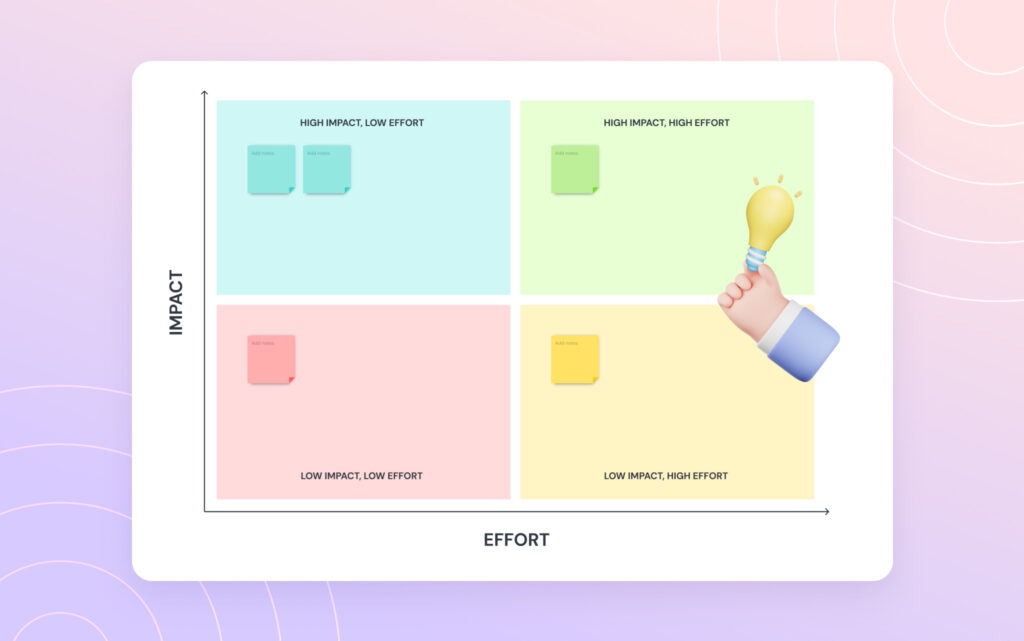
When it comes to decision-making in product management, it’s all about balancing impact and effort. An Impact-Effort Matrix is a diagram template that helps you decide which features or initiatives to tackle first. It considers two key factors:
- Impact: This refers to the potential benefit a feature will have on your users and business goals. Will it increase user engagement, drive sales, or solve a major pain point?
- Effort: This represents the amount of time, resources, and development complexity required to implement the feature.
By plotting each initiative on a matrix with these axes, a clear picture emerges in the diagram template:
- Quick Wins (High-Impact, Low-Effort): These features reside in the sweet spot – delivering significant value with minimal investment. They should be prioritized for immediate implementation.
- Big Bets (High-Impact, High-Effort): These potentially game-changing features may require more resources, but the potential payoff is high. Careful analysis is needed to weigh the potential benefits against the effort involved.
- Fill-Ins (Low-Impact, Low-Effort): These features may be easy to implement but offer minimal benefit. While they might seem tempting due to their ease, they can be tackled later or even reconsidered entirely.
- Money Pits (Low-Impact, High-Effort): These initiatives are the ultimate priority drains. They require significant resources yet offer little value. The Impact-Effort Matrix helps you identify and avoid these resource black holes!
The Impact-Effort Matrix is a valuable diagram template for any product manager. It removes the guesswork from prioritization, helping you focus on initiatives that deliver the most impact with the least effort. This diagram template, in turn, leads to a more efficient product development process and a product that truly resonates with your target audience.
3. Product Roadmaps
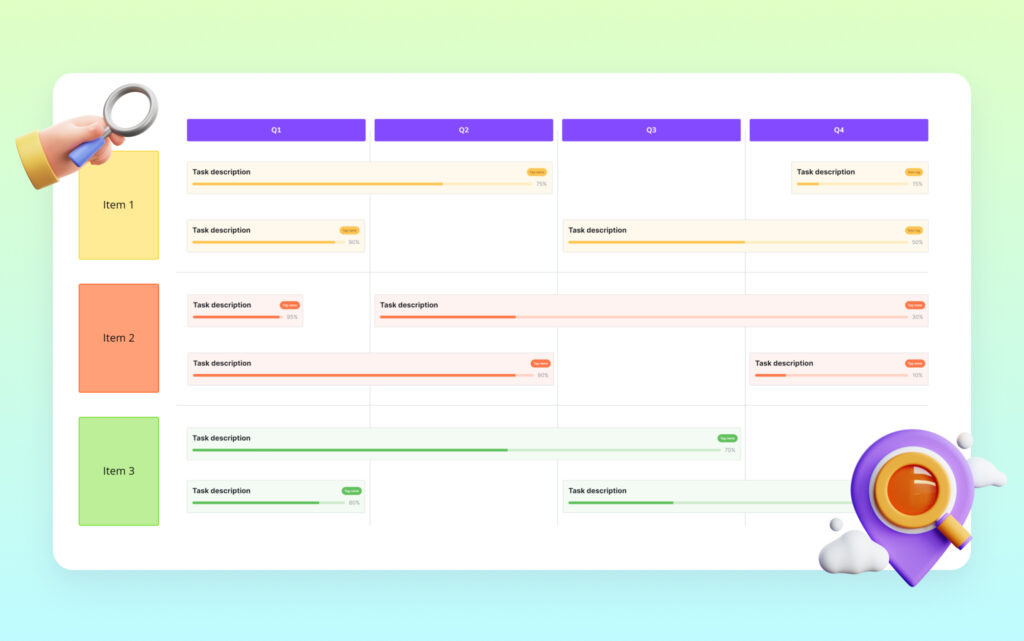
A product roadmap is a visual representation of your product strategy and timeline, outlining key milestones, features, and releases. It’s like a high-level map that plots out the journey of your product, highlighting the key stops along the way.
A product roadmap diagram template not only helps in planning but also acts as a powerful communication tool, aligning stakeholders and ensuring everyone understands the direction of the product. With a diagram template for product roadmaps, you can efficiently communicate project plans, saving time during presentations.
So, whether you’re defining goals, establishing timelines, outlining strategies, or determining actionable steps, a well-crafted product roadmap diagram template can be your guiding star.
4. User persona
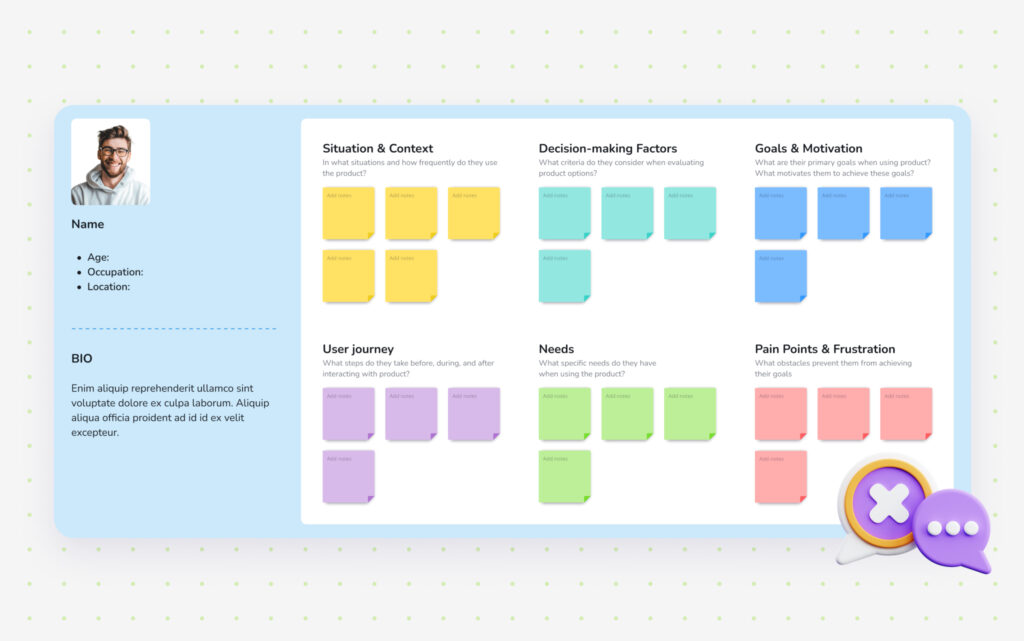
A User Persona is a detailed profile that helps product managers step into the shoes of their target audience. This diagram template captures demographics, behaviors, goals, needs, and frustrations – essentially everything that makes them tick.
User personas diagram template empowers product managers with a deep understanding of the users they’re building this product for. This translates into features and functionalities that are laser-focused on tackling real user problems. Understanding user goals and frustrations means designing experiences that are intuitive and a joy to use. Plus, user personas act like a trusty compass throughout development, keeping the product on track to meet user needs and avoid any major detours.
By using user personas, product managers can bridge the gap between abstract data and real people, making informed decisions that resonate with their target users. With modern design tools like Visily catering to non-designers, creating user personas using professionally designed templates has become effortless.
5. User Journey Maps
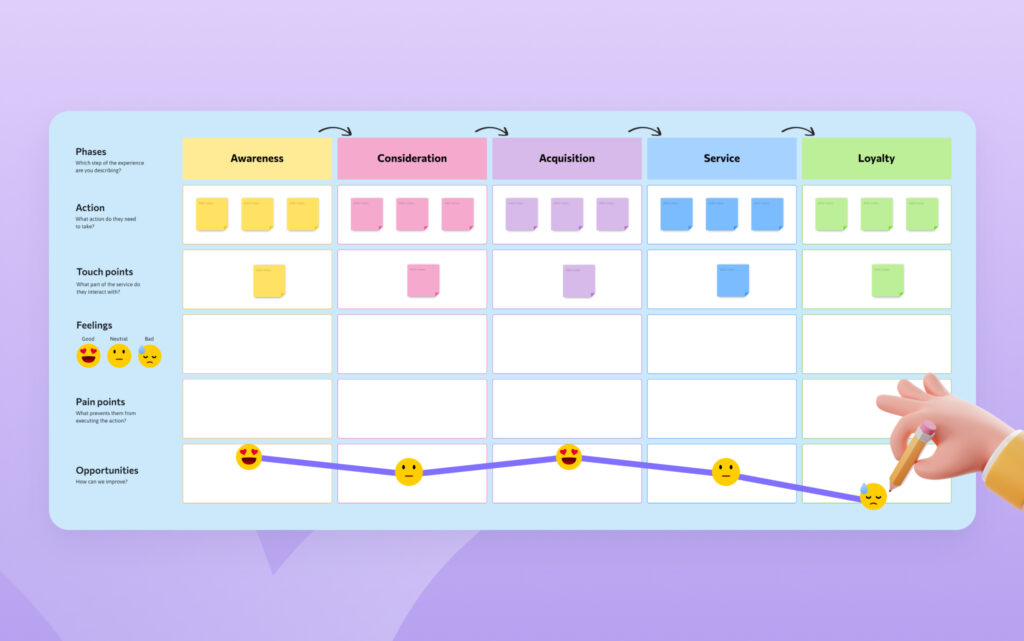
The User Journey Map maps out the user’s experience with your product, step-by-step. Imagine it like a detailed roadmap, tracing a user’s journey from initial awareness to achieving their desired outcome. The diagram template captures the user’s thoughts, emotions, and interactions with your product at each stage. Understanding this journey is crucial for improving the user experience.
A User Journey Map is an essential diagram template in this process, helping you visualize in a structured manner and strategize on addressing user needs effectively. Here are its key elements:
- Touchpoints: The map identifies every point at which a user interacts with your product during their journey. This can covers a range of interactions, from the product itself (website, mobile app) to marketing emails, social media interactions, or customer support.
- Emotions: This element captures the user’s feelings and thought processes throughout their journey. For instance, happy users feel excited and accomplished when they successfully complete a task, or frustrated users encounter a confusing interface and feel lost.
- Pain Points: These are the specific challenges, frustrations, or roadblocks users encounter while using your product. Common issues lie in difficulty in completing a task, finding the interface confusing, or lacking the information they need.
By mapping out these experiences, you can identify opportunities for improvement and innovation in your product or marketing strategies, ensuring a more seamless and satisfying user experience.
Summary
Diagram templates are indispensable tools for product managers, facilitating clear communication of complex information, informed decision-making, and user-centric development. By mastering these five essential diagram templates—SWOT Analysis, Impact-Effort Matrix, Product Roadmaps, User Persona, and User Journey Maps—product managers can effectively navigate the complexities of their role and drive successful product outcomes.
Embrace these tools to enhance your strategic planning, align your team, better communication, and ultimately deliver products that resonate with users.
